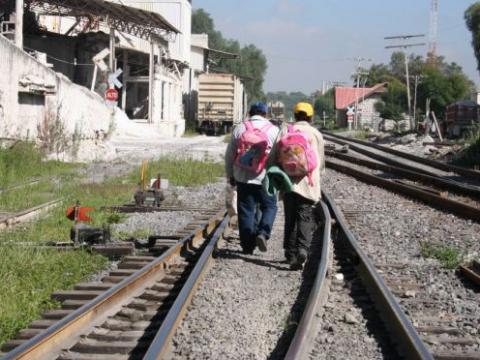Close-up: Migration crisis in Mexico and Central América

Two years ago a humanitarian crisis arose as US authorities declared that more than 90,000 children were fleeing from Central America and Mexico towards North American territory and that they would not be able to host this number of immigrants, but far beyond that, there were a large number of children traveling alone.
New York Times: The Refugees at Our Door
Many organizations responded then and so did the governments from Mexico and Central America- trying to mitigate this humanitarian crisis. Two years on, there have been changes in regional policies, governmental agreements, and more. But despite those efforts the number of children going by themselves trying to cross the US border has increased.
The Government Secretariat from Mexico reports 12,794 children, just from January to May 2015; data which could be higher due to migrants that are not registered or haven not been through an official detention spot. There's an increasing rate of 62% compared to the same period of last year.
Children make the dangerous trip north aboard freight trains, trucks or by foot.
There are more than 11,000 children currently traveling through Mexico seeking to cross the border to the US. These boy and girls are walking the length of Mexico, often at night so as not to be seen. This means 1,891.96 miles from Chiapas, the southern state and the entrance from Central America, to Tijuana, the northern border with the US territory. Luckily, if that expression can be used, part of this journey can be done by riding the train, called “the beast”, which also means facing the encounter with gang members, robbers and other risks which makes this journey a daily challenge for any person fleeing from the violent environment faced in Central American countries.
World Vision provides safe places for vulnerable children.
Many of them spend a couple of nights in shelters where they get some rest and renew their strength to keep walking towards the American dream, an oasis in this long walk. Here is where World Vision is acting seeking to protect them in their journey through psychological support, and working with the shelters to offer proper facilities for them to rest and to be safe from gangs, or even migrants that sometimes try to take advantage of them as well.
The unaccompanied children: World Vision El Salvador responds with a unique initiative
Have you ever walked 1,891.96 miles? How far have you walked? It’s a long journey that might be hard to explain or to understand for many of us, but it’s any type of support that can make a difference on the lives of migrants, specially the children, in making them feel more secure, accompanied or even supported as they are only seeking for a better life and World Vision in coordination with other organizations is doing it so through many shelters trough out the Mexican territory seeking child well being.
David Munoz is the Regional Communications Manager, World Vision Latin America and the Caribbean.